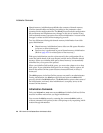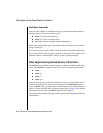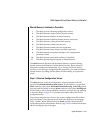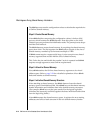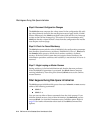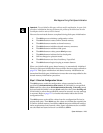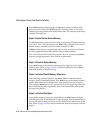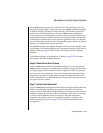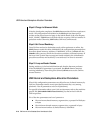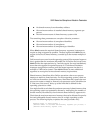
System Architecture 2-13
What Happens During Shared-Memory Initialization
During shared-memory initialization, disk structures and disk layout are not
affected. Essential address information (such as the locations of the logical
and physical logs) is read from disk. These addresses are used to update
pointers in shared memory.
Step 5: Wake Parent Process
After the tbinit daemon updates all pointers, it wakes the parent tbinit
process and writes a “shared-memory initialization complete” message in
the OnLine message log (specified as
MSGPATH in the configuration file). The
prompt returns to the user at this point, and any error messages that might
have passed from the daemon to the parent process are displayed. The parent
process goes away at this point. Its role is ended.
Steps 6 and 7: Initiate Fast Recovery and First Checkpoint
Shared memory is initialized. The tbinit daemon initiates fast recovery.
(Refer to page 4-39 for further information about fast recovery.)
After fast recovery executes, tbinit initiates a checkpoint. (Refer to page 2-70
for further information about checkpoints.) As part of the checkpoint
procedure (page 2-72), tbinit checks the database tblspace index to verify
that all database names are unique. (Refer to page 2-107 for further infor-
mation about the database tblspace.)
After the checkpoint completes, the daemon writes a “checkpoint complete”
message in the OnLine message log.
OnLine is in quiescent mode.
Step 8: Drop Temporary Tables (Optional)
The tbinit daemon begins a search through all dbspaces for temporary
tblspaces. (If you executed tbinit with the -p option, tbinit skips this step.)
These temporary tblspaces would have been left by user processes that died
prematurely and were unable to perform proper cleanup. Any temporary
tblspaces are deleted and the disk space is reclaimed.






